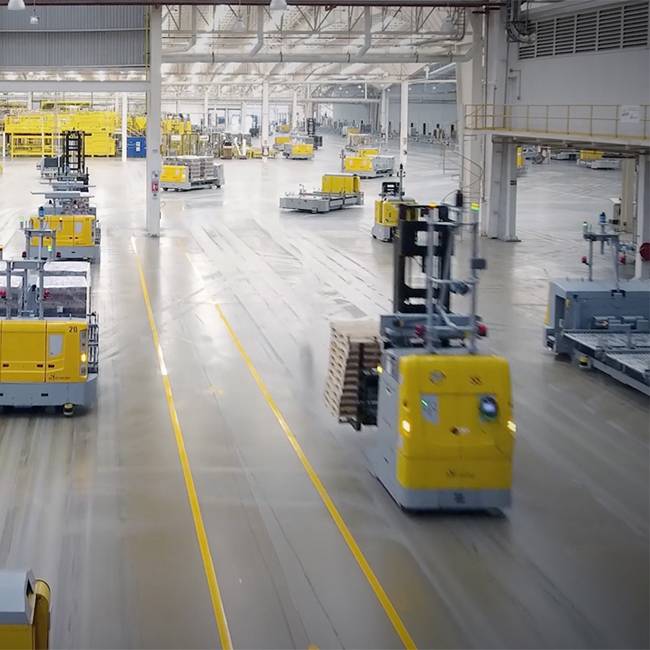

Caster Concepts’ casters for AGVs (automated guided vehicles) offer a number of advantages, including maneuverability, durability, and ease of maintenance — and most of all, 50% longer battery runtime.
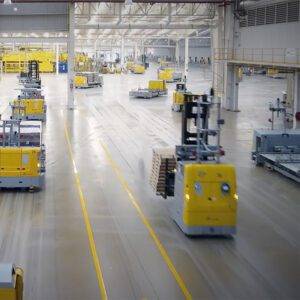 One of the main benefits of a caster designed for AGV applications is its maneuverability. AGVs need to be able to navigate tight spaces and avoid obstacles. If they don’t track properly, they may not accurately position or deliver their payload, potentially causing errors or damage to the materials being transported.
One of the main benefits of a caster designed for AGV applications is its maneuverability. AGVs need to be able to navigate tight spaces and avoid obstacles. If they don’t track properly, they may not accurately position or deliver their payload, potentially causing errors or damage to the materials being transported.
Caster Concepts has casters that make moving an AGV easier. This includes Swivel-on-Swivel technology that reduces shifting and independently rotating wheels to minimize friction and scrubbing. Less wear and tear on the battery and drive train means the AGV doesn’t have to work as hard to maneuver. And, keeps it running longer.
Another advantage of caster wheels is their durability. They are made from strong materials that can withstand a lot of wear and tear. This is important for AGVs, which are often used in harsh environments—think hot, dusty factories or cold, damp warehouses. That’s why AGVs are built to be durable and reliable and need the casters that move them to be just as heavy duty.
There are many different types of casters that can be used for automated guided vehicles (AGVs). The type of caster wheel material that is best for a particular application will depend on a number of factors, including the weight of the AGV, the type of surface that it will be traveling on, and the surface conditions that the caster is traveling on.
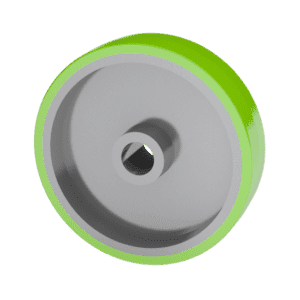
|
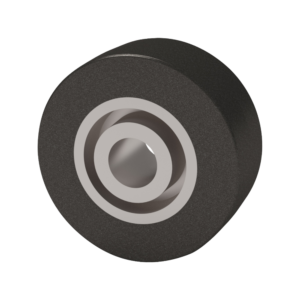
|
|
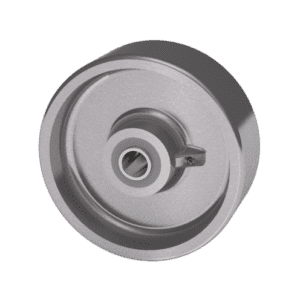
|
In addition to the type of material of the caster, the size of the caster wheel will also need to be considered. The size of the caster wheel affects the load capacity of the AGV, while the material of the caster wheel affects the durability of the AGV.
The size of the caster affects load capacity in a few ways. First, larger casters have a larger surface area in contact with the ground. This means that they can distribute the weight of the load more evenly, which reduces the pressure on the ground and makes it easier for the caster to support the load.
Second, larger casters have a larger moment of inertia. This means that they are more resistant to tipping over, which is important for loads that are top-heavy.
Finally, larger casters are often made from stronger materials, which makes them more durable and able to support heavier loads.
When choosing casters for a particular application, it is important to consider the size of the load and the type of surface that the caster will be traveling on. For example, if the load is heavy and the surface is uneven, then larger casters will be necessary.
RELATED: WILL A BIGGER CASTER OR A BIGGER WHEEL IMPROVE ERGONOMICS?
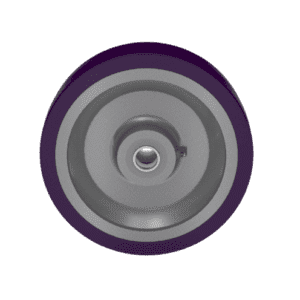
92A HPPT Polyurethane Tread for high-speed, high-weight applications
The material of the caster wheel affects the durability of the AGV in a few ways. First, the material of the caster wheel determines how well it can withstand wear and tear. Caster wheels made from strong materials, such as steel or nylon, are more durable than caster wheels made from materials plastic. However, certain high-performance polyurethanes are designed with superior tear and wear resistance.
Second, the material of the caster wheel affects how well it can withstand shocks and impacts. Caster wheels made from flexible materials, such as rubber, are better at absorbing shocks and impacts than caster wheels made from rigid materials, such as steel.
Finally, the material of the caster wheel affects how well it can withstand extreme temperatures. Caster wheels made from materials that are resistant to heat and cold, such as nylon, can withstand temperatures up to 250° F. And for applications in temperatures up to 600° F, wheels should be made out of either cast iron or steel.
When choosing casters for an AGV, it is important to consider all of the factors that will affect the performance of the AGV. By choosing the right type and size of caster, you can ensure that your AGV will perform safely and efficiently. Not sure which caster is right for you? Contact us, we are here to help!